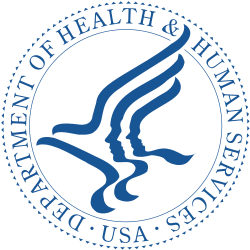History
The Marine Hospital Service, predecessor of the Public Health Service (PHS), began collecting data on communicable diseases and performing surveillance of the incidence and distribution of diseases due to an 1878 act of Congress. In 1893, another law provided for weekly collection of data from state and municipal authorities. [1]
The Division of Sanitary Reports and Statistics was established in 1899 as part of the initial establishment of internal divisions within the Marine Hospital Service. [2] Separately, the Division of Public Health Methods was formed in 1937 within the National Institute of Health. [3] In 1943, these two divisions were merged, retaining the name Division of Public Health Methods but being transferred into the Office of the Surgeon General. [2]
In 1946, the Division of Public Health Methods absorbed the Vital Statistics Division, which dated from 1903, from the Bureau of the Census in the Department of Commerce. The merged division was renamed the National Office of Vital Statistics. It was then transferred into the PHS Bureau of State Services in 1949. [2] [4]
In 1960, the National Office of Vital Statistics and the National Health Survey merged to form the National Center for Health Statistics. [5] The National Health Survey had been created within PHS in 1956 through the National Health Survey Act (Pub. L. 84–652); it was the successor to a seminal national health survey performed by the Works Progress Administration during 1935–1936, which had multiple supplemental studies carried out in the intervening decades. [1]
During the PHS reorganizations of 1966–1973, the National Center for Health Statistics was part of the Health Services and Mental Health Administration (HSMHA), [6] and afterwards was part of the Health Resources Administration. [7] Since 1987, it has been part of the Centers for Disease Control and Prevention (CDC). [5]
Data collection programs
NCHS collects data with surveys, from other agencies and U.S. states, from administrative sources, and from partnerships with private health partners. NCHS collects data from birth and death records, medical records, interview surveys, and through direct physical examinations and laboratory testing. These diverse sources give perspectives to help understand the U.S. population's health, health outcomes, and influences on health. [8]
There are four major data collection programs at NCHS: [5]
National Health Care Surveys
The National Health Care Surveys provide information about the organizations and providers that supply health care, the services they render, and the patients they serve. Provider sites surveyed include physician offices, community health centers, ambulatory surgery centers, hospital outpatient and emergency departments, inpatient hospital units, residential care facilities, nursing homes, home health care agencies, and hospice organizations. The National Health Care Surveys are used to study resource use, including staffing; quality of care, including patient safety; clinical management of specific conditions; disparities in the use and quality of care; and diffusion of health care technologies, including drugs, surgical procedures, and information technologies.
This page is based on this
Wikipedia article Text is available under the
CC BY-SA 4.0 license; additional terms may apply.
Images, videos and audio are available under their respective licenses.
